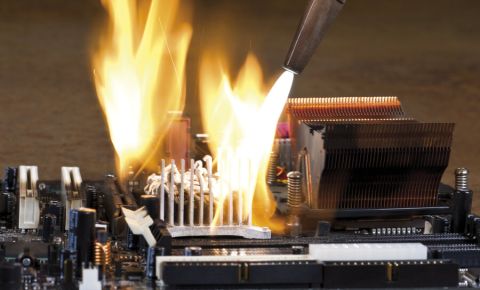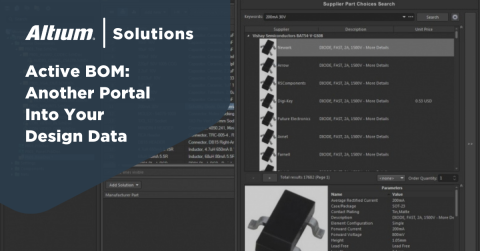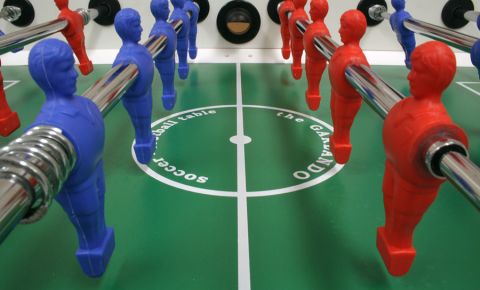Copper Efficiency and its Impact on Electronics Design and Manufacturers
We learned early in our engineering education that copper is the most widely used metal to conduct electricity. The industry trade group, Copper Development Association, indicates that 61% of all mined copper ends up as an electrical conductor in a never-ending list of applications. Further study shows that choosing a metal for use in an electrical circuit goes beyond its ability to conduct electricity, and includes such things as electrical efficiency, low specific resistance, material cost, mechanical workability, and rapid heat dissipation.
Our training also debunked the misnomer that copper is the “best” electrical conductor. There is no doubt that copper is a superb conductor but silver is slightly better. Silver much less frequently used as an electrical conductor because it is 500-600% more expensive than copper. Silver also has poor corrosion resistance.
The impact of copper efficiency on electronic circuit design and its subsequent manufacture is evident in many areas, as noted above. But when we say copper is “efficient,” we need to avoid confusing efficiency with effectiveness. Effectiveness measures whether things are done without considering how well it is done or if you even did the right things. Efficiency is about doing the right things, right. When it comes to copper efficiency in electronic circuits, there are certain concepts and product applications that we, as electronics engineers, should understand.
The Metrics of Copper Efficiency in its Application to Electronics
Printed circuit boards are most commonly fabricated by laminating a copper sheet onto a non-conductive substrate, then etching away most of the copper, leaving just the current-carrying copper circuit traces. Wasting copper in this manner is obviously not cost-efficient. A newer fabrication method uses inkjet technology to apply the copper traces to the substrate, which eliminates copper waste and makes the fabrication process much more cost-efficient.
Any PCB manufacturer needs the most information you can give them regarding your applications. Whether it is a clear cross-sectional area to dictate etching, PCB thickness, copper cable, copper plating, copper wiring, solder, and copper conductors, or if it is having a clear PCB layout and output file process that shows material needs, surface area, thermal vias, surface-mount technology, and other components, your design software is pivotal.
Copper Efficiency When Used Inside Integrated Circuits
Although gold sees a lot of use in computer chip manufacturing, it was not uncommon to see aluminum used where possible as a cost-saving measure. But as circuits continue to downsize, with more integration and faster operating speeds, it has become necessary to replace aluminum with copper in many I.C. applications. Copper allows for decreased conductor width and length, which reduces power requirements and improves heat dissipation.
Make sure you are accounting for all portions of your product development
Copper Efficiency in High-Power R.F. Signal Communications
Electronic transmitter/receiver systems used in high-power equipment, like radar, radio and microwave communications, can experience significant signal loss via coaxial cables going out to the antenna. To alleviate the signal loss to/from the antenna, coax is often replaced with “waveguide.” Waveguide has the appearance of a hollow, rectangular, metal tube, and the rectangular dimensions get smaller as the signal frequency goes up.
In many high-power R.F. systems, the distance the waveguide travels out to the antenna can be 15-20’ or farther, making it a fairly pricey item. In order to save money in these situations, it is common for waveguide to be made up of aluminum. Aluminum, however, has far less conductivity than copper and can cause lost efficiency in terms of signal power. In cases like this, switching to copper waveguide can improve power loss efficiency by 30-40%.
Copper Efficiency in Shielding Circuits from Electro-Magnetic or R.F. Interference
EMI/RFI shielding on wire cables is often done with aluminum where possible, to reduce manufacturing costs. In electronic applications with extremely critical signal interference problems or security concerns arising from the possible interception of sensitive communications, it becomes necessary to electrically “block” incoming EMI/RFI and/or block important signals from being detected and processed by unauthorized parties.
When signal frequencies get high enough, it becomes increasingly important to use metals with a higher conductivity, such as copper. In most shielding applications, the metal used does not present a corrosion problem, if one develops. The key performance parameter is to quickly block the propagation path by shorting to ground any attempt to pass through it.
The cost efficiency of copper shielding in smaller applications is not a major concern. The cost efficiency of large-scale copper shielding for an entire room or building, however, can be subpar. This means the design engineer has to carefully review shielding conductivity requirements to see if copper shielding is really necessary.
Copper can impact all things in printed circuit boards
Copper Efficiency Related to Thermal Conductivity
Most electronic components generate heat which can cause premature aging and failure. This is especially true for highly integrated, high-speed microprocessors. Adding a metal heatsink to an electronic device is often done with aluminum due to its significantly lower cost than precious metals, like silver, gold or copper. Aluminum heat-dissipating devices get decidedly less efficient in cost and thermal conductivity as the temperature goes up, requiring an ever larger heatsink surface area.
Due to the physical size, form, and fit of an electronic circuit, you may not have the room to use larger aluminum heatsinks. This is where copper's high efficiency as a thermal conductor can make a major impact. Copper’s thermal efficiency is about 60% greater than aluminum, so it can remove heat far more rapidly. The more heat removed from the processor, the more efficiently it will operate, with less potential for damage to other critical components.
Copper Efficiency
We easily made the case for copper’s efficiency in its use in and on electronic equipment and circuits. We are also more aware of the possibility to either overuse copper because of its “go-to,” widespread application in electronics, or not recognize the lack of efficiency in other metals and delay switching to copper, the more efficient option.
Depending on the cross-sectional area, heat dissipation and planning your components for the manufacturing process can be a difficult task. Knowing your traces won’t be entirely enough for designers these days as the copper process has developed with the available information from your PCB layout software.
In a nutshell, electronics engineers need to understand the application of any metal they specify for use in their designs, instead of simply using whatever is easily acquired or employing the “this-is-what-we-always-use” syndrome. Knowing when we need copper’s excellent electrical and thermal efficiency in electronic circuits can only add to our skills, and increase our value in the workplace.
Using PCB layout software like Altium Designer helps you maximize the efficiency of your design with a strong Bill of Materials tool. If you want to learn more about material selection or the efficiency of using copper in your PCB design, talk to an Altium expert today.










